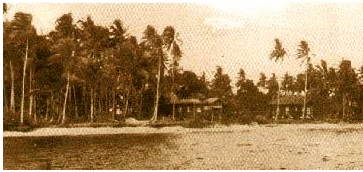
Once, Pasir Gudang was only a fishing village In the year 1918, the Pasir Gudang area (formerly called ‘Kampung Pasir Udang’) explored by Long Abu who is believed to originate from Riau, Indonesia. When the residents of Kampung Pasir Udang are increasing, the following villages were set up:-
1. Kampung Ulu (now MSE dockyard upgrading site)
2. Kampung Tengah (presently Tenaga Nasional Berhad area)
3. Kampung Hilir
4. Kampung Sungai Perembi. The Balai Polis Pasir Gudang is located here.
The villager consist of Malays and a few Chinese, totaling 83 families. They worked as fishermen and plantation labour.
In 1920, four more villages were set up:-
1. Kampung Air Biru (now a port).
2. Kampung Pasir Merah (now a port).
3. Kampung Pasir Puteh, which still presently remains.
4. Kampung Pulau Tekong, which now became a part of Singapore.
Slowly, Pasir Dung’s name has changed to Pasir Gudang due the activates of sand mining to be exported to Singapore. The collected sand will be gathered into one place. It is believed that due to this situation the name ‘Pasir Gudang’ appears. In the middle of the 19th century, A Chinese from Teochew descendants has explored further towards the land through a river path which is full of mangrove wood for the farmers. Their activity was finally certified through a 'surat sungai' issued by the Sultan Johor which allows them to develop the Kangkar Masai, Kangkar Plentong dan Kangkar Lunchu area under the river chiefs which is known as ‘Kangchu’. They also planted Gambier and black pepper on these river banks.
'Penghulu' is king’s representative who collects taxes for goods which are brought in and out through the water route. When the price of gambier and black pepper decreases drastically , a few plantation owners tries to change on pineapple cultivation instead.
In the early 20th century, rubber plantation has started to get attention. Rubber introduction in Malaysia has caused British and Singaporean entrepreneurs to open large estates. Until 1916, 6 estates which cover an area the size of 15,000 acres have been opened in Mukim Plentong. Kampung Pasir Gudang has become a police, customs, and opium dealer’s centre, and also a centre for the Mukim Pasir Gudang village chief whereby a new position is created in the year 1916. The establishment of these estates has also caused the increase of the British influence entry in the legislation system and Johor state administration. They also brought in labour from China and India to work in these estates.
The Japanese occupation during World War II and the guerilla advancement after the war in this area has brought a big impact to plantation activities. Under the Curfew Laws in the 1950’s, new villages have been set up in Plentong, Masai, and Pasir Gudang. Estate labours have been placed either in these new villages or estate barracks which are guarded.
However, small business and activities in the fishermen village is badly affected because of the curfew. More village residents have moved to work in estates. After ‘Independence’ in the 1950’s, the government tries to assist Malay residents with no land from poverty through the setting up of land schemes such as in Ban Foo, Plentong Baru and Felda Cahaya Baru.
The State Government later has taken the estate lands, and turns them into industrial and housing areas. This event has proceeded to become the background to the development of the industrial area in Pasir Gudang. This development is very important especially to the Johor state, as it involves the establishment of the Johor Port which has become an alternative to the port situated in Singapore.